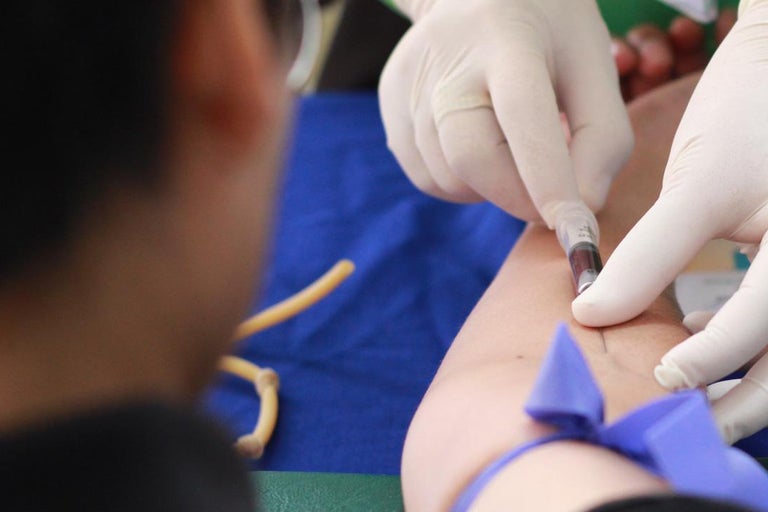Pathology collector job description
Let’s get real. Job information online can often be overly optimistic — conveniently glossing over the raw bits. But when you’re making decisions about your future, you need all the facts.
That’s why we anonymously surveyed pathology collectors about their job, with hopes of getting an honest insight into what it’s really like.
While we did our best to ensure respondents were Australians and verified their job titles with proof of employment, we can’t guarantee complete accuracy — or that your experiences in the field will reflect theirs. So, we suggest that you take these insights as a guide only and try to talk to people in the field before making an important decision.
Tasks and responsibilities for a pathology collector
A pathology collector’s responsibilities include:
- Collect specimens including blood, urine, faeces, swabs and saliva
- Deal with anxious patients
- Follow the chain of custody procedures
- Accurately label and record pathology collection
- Take delivery of samples
- Prepare samples for pickup by courier
How to become a pathology collector
-
Study
Completing a qualification, like a Certificate III in Pathology Collection (HLT37215), provides you with the skills you need to perform the job safely, effectively and confidently.
-
Make sure your vaccinations are up to date
People who work in the health care and aged care industries are at risk of catching vaccine-preventable diseases. Ensure all of your immunisations are current to reduce this risk.
-
Get some work experience in a laboratory
You could contact a local pathology laboratory and enquire about getting some work experience. Knowing what is involved in the whole pathology process gives you valuable insight into the role.
Pathway options
A role in pathology specimen collection could be a great entry point to other careers. Senior positions within pathology or different roles in the health sector are plentiful.
Junior
-
Pathology assistant (laboratory aide)
Most common qualification: Certificate III in Pathology Assistance (HLT37415)
Mid
-
Pathology collector
Most common qualification: Certificate III in Pathology Collection (HLT37215)
-
Phelmbotomist
Most common qualification: Certificate III in Pathology Collection (HLT37215)
Explore related qualifications
Certificate III in Pathology
This course provides all of the skills and knowledge to begin a role in pathology collection. It includes core units of competency in preparing samples for testing, medical terminology, workplace health and safety, infection control, and communication and customer service skills, to name a few. There are also elective units available.
To achieve this qualification, the candidate must have completed at least 35 hours of work placement.
The average duration for this course is six months full-time, and delivery can be in a blended learning setting with a practical placement.
Enrolments are open several times a year, government funding and fee concessions are available to eligible students, and payment plans for course fees are available from some providers.
Entry requirements may vary, but many course providers may include literacy and numeracy assessments and a Working with Children Check to enrol. Enquire about a course to find out more.
3 providers offer this course



Related subjects
The health care sector is enormous and hosts a vast range of job opportunities, all needing enthusiastic and caring workers.
Related articles
If you feel a job in pathology collection is right for you, delve into a catalogue of resources to gain insight into your new career.
Reviews
Reviews are from Australian workers with this job title or a very closely related one.
Is this your job title?
Share your thoughts and help people decide if this job is right for them.
- All
- Positive
- Negative
Jana
Sep 08 2021Enjoy helping others.
What are the best parts of the job?
Knowing that my career is constantly helping people.
What's the most challenging part?
Getting abused by people who do not have any patience or respect.
Grace
Sep 09 2021Enjoy the consistently busy environment and helping others.
What are the best parts of the job?
Caring and interacting with people, working at a busy, fast-paced orthopedic ward.
What's the most challenging part?
Time management and critical analysis can be a challenge.
Kirsteen
Sep 09 2021Always meeting new people and learning new skills.
What are the best parts of the job?
Meeting different people, always upgrading skills, good pay.
What's the most challenging part?
Time management and ensuring I stay on top of tasks.

















